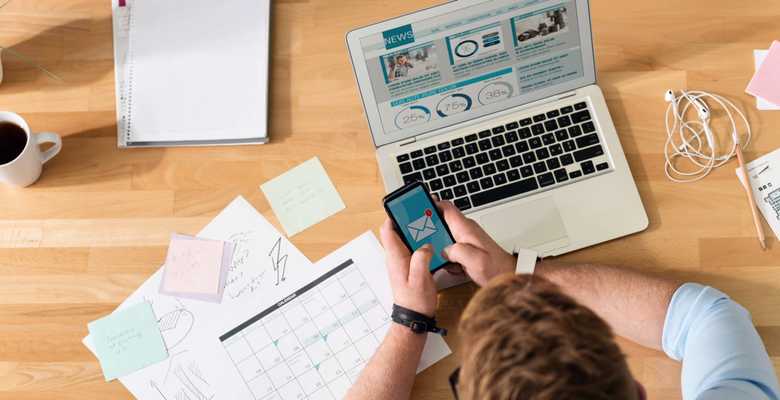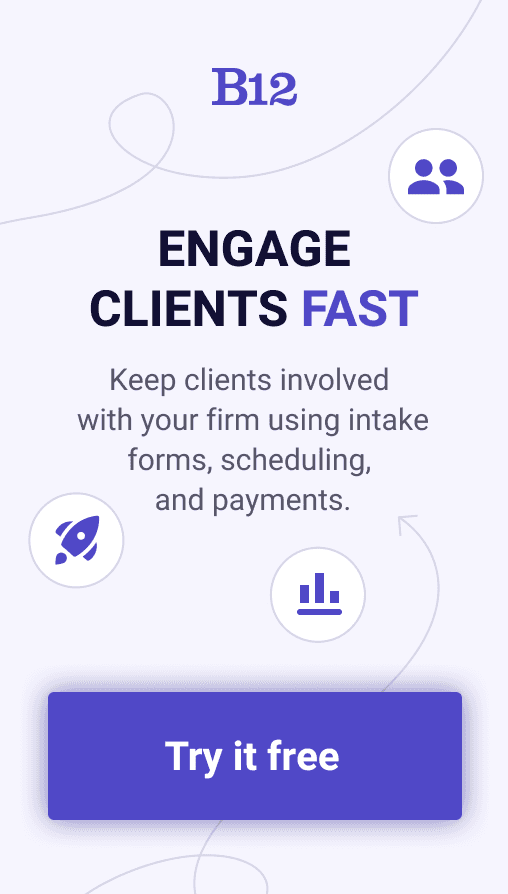Build an AI website in 60 seconds
AI generates your personalized website instantly with built-in scheduling, payments, email marketing, and more.
Start for free
What are the fundamentals of a professional website layout?

A professional website layout is essential to delivering an effective and engaging user experience that helps drive business goals. With the right design, you can prioritize content, communicate messages, and increase conversions on your site.
In this post, we'll outline common website layouts, layout recommendations, and how to apply design guidance to develop a successful website. We'll also cover leveraging crucial components like visual hierarchy, white space, color, and typography to produce a seamless user experience.
Understanding the basics of website layouts design principle
Creating a great website layout ensures visitors enjoy their experience and return for more. The first step in establishing a polished and useful website design is understanding the fundamentals of website layout design. Regarding the basics, website layout design is about understanding the principles of visual hierarchy, white space, color, and typography.
A design principle called visual hierarchy enables the user to comprehend the significance of different components on a page. This is accomplished by emphasizing some elements—like the logo or navigation menu—and less on others, like the footer. This helps the user to understand the navigation menu and identify the logo easily, so they can quickly move around the site.
White space, also known as negative space, is a vital tool for creating professional layout designs. You can use white space to emphasize certain elements, direct users to certain page aspects, and develop a sense of balance. Also, white space promotes order, which makes it simpler for consumers to discover what they're looking for. This aspect is important, especially on the online store and landing pages.
Color is another crucial element of website layout design. Color can draw attention to specific elements, create a sense of balance, and evoke certain emotions. It can also create contrast, which can help emphasize certain elements or create a sense of hierarchy.
Establishing a visual hierarchy
In an ideal layout design, establishing a visual hierarchy is one of the most important elements, like a magazine layout. A visual hierarchy is how we arrange the elements in a layout to give the user the most logical path through the content. This can include placing text, images, a full-screen photo, and other elements and using color, white space, and typography.
A website designer may first make sure that the user's focus is drawn to the most crucial content by establishing a visual hierarchy. This can be done through contrast, size, and placement. For example, a designer could make the most meaningful element larger and more prominent while the supporting elements are smaller and lower — like an asymmetrical layout. Other layout types include split screen layout, single column layout, and more.
Utilizing white space and color
When designing a website, utilizing white space and color matters in establishing a professional layout. White space, also known as negative space, is the area of a page left blank for aesthetic purposes and works to draw attention to specific elements. By strategically using white space, you can create a sense of balance and harmony on the web page and create a visual hierarchy.
Colors can also draw attention to certain elements or create a mood on the page. It is important to choose colors strategically, as each color carries its own message or emotion. For example, blue may be associated with trust, while yellow might be associated with optimism or joy. Think about color psychology, which holds that cold colors like blue and green are regarded as soothing while hotter colors like red, yellow, and orange are perceived as aggressive.
Using white space and color can also help create a visual hierarchy on the page, which is important for guiding the user’s eye to the page's most crucial elements. This helps the user to instantly grasp the page's objective and can assist in creating a more delightful and engaging experience.
The usage of colors and white space on a page should be uniform across the design of the website, it's also vital to remember. This contributes to a consistent look and feel, which can help create a more polished website. Remembering the contrast between the colors is important, as this can help make certain elements stand out on the web page. By strategically utilizing white space and color, you can create website templates that will be visually appealing and user-friendly to site visitors.
Leveraging typography on website layouts to communicate messages
Regarding professional website layout, leveraging typography to communicate messages is an important part of the design process. Typography involves using fonts, sizes, weights, and styles to communicate the desired message and draw attention to key elements. The correct fonts may be used by designers to establish a visual hierarchy that will assist consumers in navigating a website and focus their attention on the most crucial parts.
When selecting a font, designers should consider the type of message they’re trying to convey and their target audience. Different fonts evoke different emotions and more visual weight that can be used to help communicate the desired tone. For example, a script font may give a website a more elegant feel while more modern sans-serif fonts can create a more modern look.
Different font styles such as bold, italic, or underline direct users to your website's important words or phrases. Similarly, changing the font size or weight can help create a visual hierarchy and guide users to the most significant elements on the page.
The interaction of the font with the other design components on the website should also be taken into account by designers. Using a strong font, for instance, may assist in bringing attention to crucial page components like a call to action and sign-up form buttons by standing out from other things on the page. By considering how the typography interacts with various elements, designers can ensure that the message is communicated effectively and that user engagement is enhanced.
Enhancing the user experience with a professional website layout
A solid website style guarantees the most pleasurable and effective user experience possible. To do this, a designer should consider various page elements to make the site aesthetically pleasing and straightforward. From utilizing white space and color to leveraging typography, there are many ways to make the user experience more pleasant. Here are a few tips on enhancing the user experience with a professional website layout:
First, consider user behavior or how the user interacts with the web pages. This implies that the navigation should be easily understood and well explained. It’s also important to ensure no dead ends or confusing paths could lead the user away from the site. Additionally, designers should consider the click flow of the website and how it will make the user journey easier.
Second, design elements should be used to make the web design visually appealing, like a magazine layout. This includes using images, featured image layouts, icons, and other visuals to draw the user in. Additionally, color should add depth and contrast to the page. Using color, designers can create a sense of hierarchy and draw attention to the most important elements.
Finally, typography can be used to convey messages visually in website layouts. By using fonts of different sizes and styles, designers can enhance the web design and make it easier to read. Additionally, using fonts of different weights can add emphasis to certain elements and help guide the user’s eye to the most important content.
These design components enable a designer to produce a user-friendly and aesthetically pleasing website layout. When done properly, the user experience will be better, increasing the likelihood that they will explore and stay on the website.
Get a professional website layout with B12
Launch a beautiful, professional website in 30 days or less with B12. Start by seeing a draft for free in 60 seconds, then work with expert designers and copywriters to personalize and refine it. B12 designers follow best practices for user experience, visual hierarchy, and branding cohesion, as well as conversion. Finally, launch it and use client-engaging tools like invoicing, intake, contracts, and more to grow your business
Attract, win, and serve more clients
Receive helpful resources directly to your inbox to help you succeed online.
Draft your site in 60 seconds
Get an AI website made specifically for you that's free to launch.
Start for free ✨No credit card required
Related posts
Spend less time on your website and more time growing your business
Let B12 set up your professional online presence with everything you need to attract, win, and serve clients.





